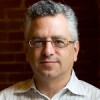George Lucas, the creator and original director of the Star Wars films, decided that he wanted to open a museum. It would house some Star Wars memorabilia, but also showcase Lucas’ extensive art collection, which includes paintings by Norman Rockwell, illustrations from children’s books such as Babar and Peter Rabbit, and works by artists including Keith Haring and R. Crumb.
The museum would provide an estimated 1,500 jobs in construction, as well as 350 permanent staff positions. Its endowment and the value of its collection have been estimated at somewhere north of $1 billion. All of this would come out of Lucas’ own pocket. But what sounded like a slam dunk turned into one of the strangest site selection odysseys of recent times.
Lucas, who has spent the bulk of his career in the Bay Area, proposed as long ago as 2009 that San Francisco would be a great home for his museum. The snag turned out to be that he had a particular site in mind, a spot in the Presidio, a former Army base that sits just south of the Golden Gate Bridge and has become part of the national park system.
That caused some trouble. Mayor Ed Lee was all in favor of the museum, but the Presidio is overseen by a federal trust. Although its board is dominated by movers and shakers who live in San Francisco, they looked at things differently than the mayor and other city officials. The board concluded that the museum’s proposed design violated height restrictions for the site and it just didn’t fit in with the aesthetic of the place. “They did not set out to find a reason to say no to him, but they wanted to be treated as equals,” says John King, architecture critic for the San Francisco Chronicle. “There was an air -- and this includes his supporters, not just Lucas -- there was an air of [condescension] that San Francisco would be lucky to have this and the Presidio Trust would be foolish not to let him have the site.”
If San Francisco didn’t want the museum, Chicago did. Or so it seemed. Lucas also has connections to the Windy City, which is his wife’s hometown. And, once again, the mayor was completely on board. But Lucas wanted to build in another sensitive spot, this time along the Lake Michigan lakefront. That triggered lawsuits from a nonprofit group, which had already dragged on for a couple of years when Lucas decided to pull the plug on the project last summer. Mayor Rahm Emanuel complained bitterly that the city had blown a once-in-a-lifetime opportunity.
But Lucas’ critics argued that the filmmaker’s own approach had again been ham-handed. “Lucas Reaps Bitter Fruits of Arrogance as Chicago Museum Plan Collapses,” ran a headline in the Chicago Tribune.
Maybe because of his manner, or perhaps because of the intransigence of his critics, Lucas wasn’t finding success in giving away a billion-dollar gift. That’s when he tried something smart: make cities come to him. Rather than continuing to insist on his own way, he’d let the cities present packages, and then he’d make his choice.
San Francisco was back in the running. It offered Lucas a site on Treasure Island, another decommissioned military facility that sits alongside the Bay Bridge. But in January, the museum announced it was going with a site offered up by Los Angeles in Exposition Park, convenient to bus lines, schools and other museums. Proximity was the main reason museum officials gave for choosing L.A. over its neighbor to the north. But perhaps turning down San Francisco after years of frustration was irresistible.
In any event, Los Angeles Mayor Eric Garcetti was ecstatic to land a prize that had eluded his colleagues. “This is the largest civic gift in American history,” he said.









